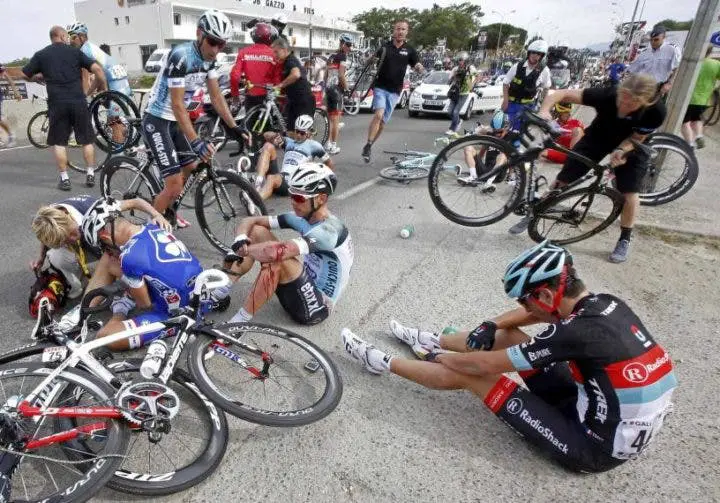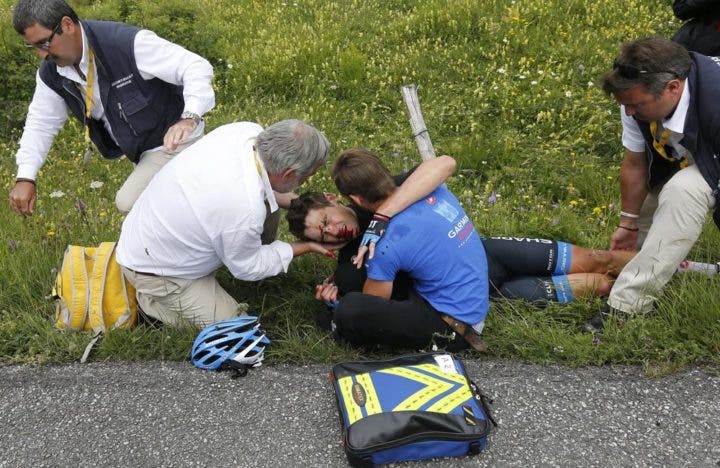Sometimes it is easy to forget that you are traveling quite fast and far when you ride a bicycle, so you are not exempt from suffering a mishap that could lead to a serious injury. No matter how good you can be at cycling, when accidents happen they happen so quickly that you don’t have time to react properly to avoid them.
So a little knowledge and caution is a good step to keep yourself safe in the event of an accident or to prevent the situation from getting worse. In this sense, discover these tips to solve a bicycle accident.
7 tips to minimize damage in the event of a bicycle accident
1. Take care of your head
Head injuries are always a cause for concern. They are generally said to be dangerous in skiing, but it can also occur in cycling. When you receive a blow to the head it can result in bleeding of the brain, causing death. Whenever an impact is received to the head it can become a serious problem. In case of receiving a blow in such an important area of the body, you should urgently go to the doctor, especially if:
- Your helmet is cracked, that means you’ve hit your head hard.
- You suffer from permanent headache, not only pain from the initial impact but because it gets worse as time goes by.
- Loss of consciousness , for this you need to be checked.
- Vision changes , so you will need medical assistance.
2. Take a deep breath
Difficulty breathing will always be an emergency situation. Often times when cyclists are in an accident they do not think that they have broken a rib. Therefore, in case you have difficulty breathing in the event of an accident, you should go to the emergency room of the closest place where you are: it could be a fracture.

3. Check your abdomen
There is a large amount of vulnerable soft tissue and vital organs in your belly that can be damaged by impact. To identify damage, take your hands and feel your abdomen . If you have a more sensitive area than others, it could indicate that you have internal damage. For example, if your stomach is distended it is a sign that there is internal bleeding, so you should receive medical assistance.
4. Stop the bleeding
The best way to deal with bleeding is basic pressure that you can apply directly to the wound, preferably with something clean and holding pressure until help arrives. In the same way, it is very useful when, you have the knowledge, to make a tourniquet around a limb to stop the bleeding.
5. Be smart about your spine
Neck and back injuries are delicate. You can usually tell if you’re okay with wiggling your fingers and toes. Obviously, you want to be able to feel your fingers and toes, but if you have any numbness it could be indicative of a possible spinal injury. Another way to identify an injury is by slowly turning your head 45 degrees to the left and right. If you feel discomfort, stop because it could also be a sign of a spinal injury ; therefore it is recommended to go to the nearest emergency room.

6. Make your personal information accessible
It is vital to keep your personal information with you whenever you go to train or just leave the house because it can save your life. To do this, load an identification card with personal data or write down the basic information on your mobile phone. In it you can reflect the contacts of people close to whom emergency workers can go, as well as the medications you take and the allergies you suffer.
Currently the new iPhones come with a health application that gives you the ability to fill in all your medical information . Emergency personnel will be able to access it without unlocking the phone.
7. Leave a note or text
When you go to train it is important that you spend two seconds to leave a note or record a text to a loved one or friend notifying that you are going to perform this activity. Even if it is a quick or close walk, it is necessary to inform your loved ones for greater security.
Reference
- Yeager, S. 7 Things EMTs Wish You Knew about Bike Crashes. For Bicycling [Revised January 2016]